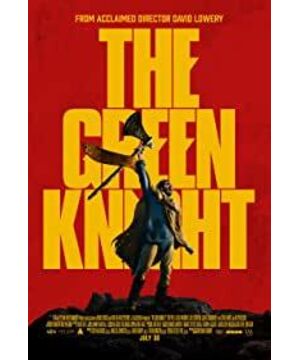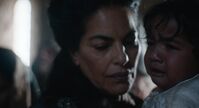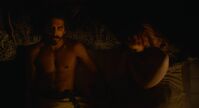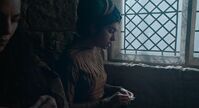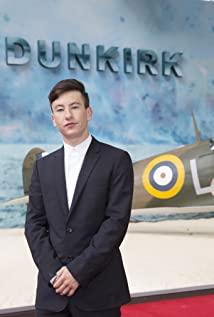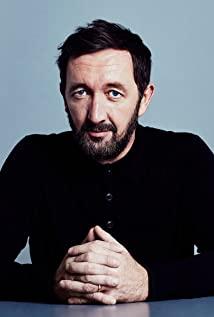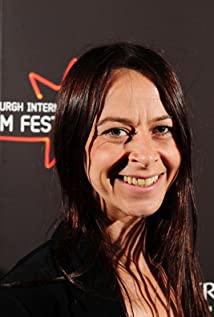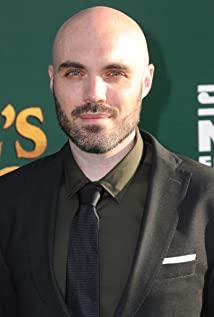Author: Peng Ruoyu
The film and television adaptation of literary works has always been difficult. Although this time is different from the past, the "Little Sister of Film, the Literature" (Zhang Ailing's words) is now in Lingfeng fluttering and looking forward, enough to create a new portal. But it has never stopped diligently seeking inspiration and nourishment from literature, inheriting, developing or even re-expanding the value of texts. However, all such creations are either bound by the original work, torn back and forth between the difference in narrative volume and the need to reproduce the plot, and the "visualization" of the story is cited as a hoax, and it is reduced to a mere form but not complete. A vassal of meritorious deeds; or boldly out of the circle, deconstructing the original canon and building a new view with the ideological cognition of "Six Classics Note to Me", but often because of the "magic reform" controversy of burning the qin and boiling the crane to the point of being so engrossed It has been criticized, and there are few masterpieces in the morning and evening.
Take Dickens's novels as an example, whether it is Roman Polanski's simplified "Oliver Twist" or Alfonso Cuaron's "Great Expectations", they only follow the rules of the main plot, far from showing Dickens's The narrative skills that I have woven in parallel with the complicated events and characters, not to mention the vast social picture and the wonderful group portraits. Films such as "The Personal History of David Copperfield" tend to be more superficial jokes and new scripts. Although they try to make breakthroughs, they are ultimately incompetent, and they appear to be nondescript and nondescript.
Coincidentally, it is also adapted from a literary work, also starring Dev Patel, and the new A24 film "Green Knight" shot by David Lowe, the director of "Ghostbusters", is also reconstructing the classics. There is nothing to see. Although it continues the existing story framework of the original work, it has made major changes to the characters and plot arrangements, supplemented by a fantastic visual design, and a narrative method that strengthens the sense of time and space. Formally it is exhausting. But looking at the core, it is still just a way of doing the opposite, taking up the path of expression of chivalry in a disenchanted attitude, and showing a man's test of growth. Its so-called "creative vision" has not only failed to open up the retro brain, but even has the suspicion of copying Martin Scorsese's "The Last Temptation of Christ" (not to mention the director's talk about being influenced by Andre Towers). Inspired by the film "Andrei Rublev" directed by Kowski). Under the stylistic representation of the chaotic flowers and the charming eyes, there is a hidden value concept and a mysterious and confusing narrative reconstruction.
"The Green Knight" is one of the outstanding works of English rhyme knight style, and it represents the highest achievement of alliteration poetry in northern England in the Middle Ages. But this classical masterpiece, which belongs to the legend series of King Arthur and the Knights of the Round Table, is not complicated in terms of the story itself. It mainly tells about the Christmas Eve of Camelot (King Arthur's legendary kingdom). When the Knights of the Round Table celebrated the 15-day New Year's Day in the palace hall, a knight in green came to challenge the Knights of the Round Table: Who would dare to cut off his head on the spot, and let him pay back at Christmas one year later an axe. And King Arthur's nephew, Sir Gawain, stepped forward to accept the challenge, beheading the green knight. The still-living body picked up the head and returned to the green church. A year later, in order to fulfill his promise, Sir Gawain embarked on a journey to find the Green Church. After many trials along the way, he was only slightly injured by the green knight's axe and returned smoothly, winning the victory for the Knights of the Round Table. Glory. However, to the surprise of Gawain and all the people of Camelot, everything about the Green Knight was the result of King Arthur's half-sister, Dame Morgan Le Fay, to make King Arthur's most reliant Knight of the Round Table a "goddess" (Morgan A trap set secretly by the Green Knight of Le Fey.
The original work aims to reaffirm the ideal of chivalry, showing how Gawain, the most gracious among the Knights of the Round Table, overcomes difficulties and obstacles with a romantic and bizarre adventure, and proves the noble character of the "perfect knight" with his detached spirit and courage. But in David Lowe's "The Green Knight", Gawain is no longer the brave, upright and polite "Prince Charming" (Gao Wen is said to be the source of this term), but as a godless man , The image of a playboy who does not obey the etiquette, is sensual, and achieves nothing. In the original work, the green knight is one of the traps designed by Dame Morgan le Fay to capture King Arthur's Knights of the Round Table. In this film, it is Gawain's mother who casts a spell to encourage her son to grow up and achieve success. This kind of adaptation is understandable. After all, in the stories after the beginning of modernity, the brilliance of the characters' "divine nature" gradually disappeared, and the shortcomings of "human nature" were exposed more calmly. How to deal with it has always been these stories. subject of interest.
However, the director seems to intend to attempt a more thorough deconstruction. At the end of the year, when the real challenge was about to come, he was timid and hesitant to move forward. But at this time, Gao Wenye was in a difficult situation. In order to become a real knight and win his own honor, he had to bite the bullet and embark on a journey to find the Green Church. In the original work, Gawain was already a well-known knight. He was determined and ambitious, and he went to the appointment to meet the challenge and defend the honor. Gawain in the film is quite different. He is still essentially a loafer and still needs to be tested to fulfill his reputation. What finally prompted him to make up his mind to set off was not from the conscious awareness of reinventing himself, but more from the protective green belt given to him by his mother.
And it is different from the usual adventure-themed films or road films where the protagonist grows through the development and extension of his journey (heart), and Gawain in "The Green Knight" is always in a hurry. condition. From the perspective of director David Lovina, who is like a shadow and a ghost, Gao Wen is like a five-mile fog in the illusion of time, wandering between the overturned heaven and earth and the swinging space and time He also failed to gain courage and confidence after going through all the calamities. The most intuitive thing is that when it comes to the test of the five qualities of chivalry (the five-pointed star on Gawain's shield), he has been repeatedly frustrated and cannot pass the test.
According to the sequence of sections in the film, the first is piety, a quality that Gawain betrayed as soon as he appeared in the film. He didn't go to church like the others, and he only wanted to hang out with prostitutes. So his mother summoned the green knight and forced him to go through the test of the knight. The second is generosity. After Gawain asked the boy to pass by, he planned to leave without looking back. Under the latter's angry questioning, he reluctantly threw a coin as the boy's reward. Failing to pass the test, he was ransacked by the boy and his accomplices. Followed by good deeds, Gawain asked for a reward for the headless female ghost's request to retrieve her head, much to the disappointment of the other party. After that, he lost his body again under the temptation of the lady of the castle, and fell into the level of chastity. In the end, based on the thirst for honor, he parted ways with the little fox who has been following him all the time, and lost his friendship.
Throughout the film, Gawain has always shown people as a failure and a downfall, helpless in a terrifying environment, struggling to survive in a state of despair and panic, and stumbling back and forth between the hesitations of moving forward or escaping. But the paradox is that when Gawain finally ushered in the life and death of the green knight wielding his axe, he saw another possibility for himself: he broke his promise and fled back to Camelot, pretending to be a hero, and then ascended the throne as an orphan. Widowhood. But it also foresees the chaos that will inevitably lead to disaster if Germany does not match. So through this momentary "insight", Gawain actually had an epiphany, and chose to accept his own destiny. Facing the green knight's axe, he would kill without dodging or dodging his neck, and practiced the transformation from ordinary person to knight.
But this is undoubtedly very absurd. The intention of deconstructing the original text and the previous laying of various audio-visual aspects and the psychological state of the characters are all in vain under the blunt turn of the director's rebellious purpose. Gawain's journey is not a backlash against the ethics of knighthood, nor is it a dissolution of mythological narratives, but is intended to reconstruct the growth history of knights through the narrative ingenuity of "living to death". Confusion arises out of this, how could the cowardly and timid Gao Wen understand himself in a "revelation" of possibility and be brave enough to take on his own destiny? Is his rash lead to death due to spiritual growth or self-abandonment in despair? It is particularly worth noting that if this film is a history of Gawain's growth, the previous foreshadowing of the characters' fear and panic would have been too much, causing Gawain's mental journey to appear thin and lacking in arc. In the film, the director's various 360-degree panning shots that show the author's character are also disconnected from the title, or at least irrelevant, and reduced to an audio-visual experiment that satisfies his personal interest.
On the one hand, David Lowe dismembered the original work, and on the other hand, he was embarrassed by the lack of new quality and lack of originality. While classical, it can return to the goal of classical. However, he disregarded the harmony between form and content, indulged in the self-infatuation of the video style, which made the reconstruction of the classics confused by the existing audio-visual system, which damaged the consistency between the text and the meaning. Towards the dilemma of adaptation in which "breaking" and "standing" go their separate ways. The difference between the movie "The Green Knight" compared to its original "Sir Gawain and the Green Knight" is just like the image of the Green Knight in it: the Green Knight in the poem is dressed in green and mighty, and the shadow is hidden. The green knight in the version is transformed into the image of a tree man, which seems to be more mysterious and terrifying in shape, but in fact reveals a kind of old-fashioned dragon bell that is stumbling without knowing it. This difference not only shows the contradiction that creators can create, but is unable to control their works, it will also become a concentrated expression of a major difficulty in the process of film and television production of literary works.
View more about The Green Knight reviews


